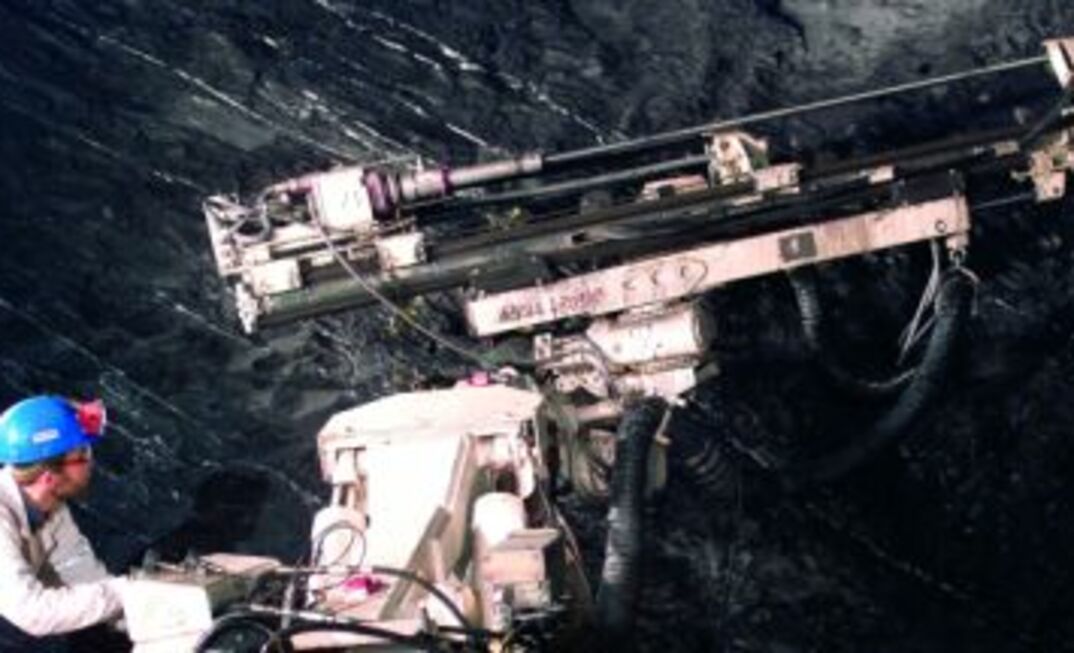Published in the May 2005 American Longwall Magazine
The trial and subsequent adoption of the Hilti OneStep rock anchor at Germany’s Prosper-Haniel longwall mine has demonstrated that elimination of subtasks in the anchor installation procedure dramatically improves the rate of advance of road headers.
Bolting specialist Hilti, together with German coal producer Deutsche Steinkohle (DSK), carried out extensive testing of the OneStep rock anchor in April last year.
The trial was based on the premise that to achieve faster progress by road headers, steps in the process that can be carried out simultaneously have to be increased. One area of focus was carrying out rock anchoring steps simultaneously, with special emphasis on acceleration of the drilling and anchor-setting process.
Conventional drilling methods require certain subtasks to be performed, including changing the drill steel and injecting adhesive. Many of the tasks can be made redundant by using self-drilling anchors, already in use for rock stabilization and securing work.
During the trial, DSK adopted a self-drilling anchor with built-in adhesive cartridge – the Hilti OneStep anchor – for roof stabilization at the face and abutments. This anchor reduced the tasks of drilling, adhesive injection and anchor-setting to a single operation.
The OneStep anchor combined the drill bit head, drill steel, anchor and adhesive resin in a single unit. The two-component adhesive resin system is contained in a tubular foil cartridge. This adhesive cartridge is located in a steel inner tube enclosed in a second 4mm gauge steel tube. The design of the anchor ensures the adhesive cartridge is completely protected and will not be damaged or leak.
To use the anchor, a dispenser is fitted to the drilling motor on the bolter and the OneStep anchor is fitted into this. The drilling operation is then started.
Slurry produced during drilling is flushed out by the flow of water through the annular gap between the anchor and the rock. The flushing water is fed to the anchor through the gap between the inner and outer tubes.
After reaching the intended drilling depth, the tubular drill steel remains in the hole where it serves as the anchor. The anchor bonding operation is then initiated by way of the dispenser.
According to Hilti, the method used by OneStep means drilling beyond specified depth is impossible and the “glove effect”, where the foil sheath of the adhesive cartridge becomes wrapped around the anchor, can be ruled out.
During the tests at Prosper-Haniel longwall, 1500 anchors were installed to provide local stabilization of a 243ft length of gallery roof. Post-installation, the quality of the adhesive bond of all anchors was checked. The drilling time, adhesive injection time and moving/setting-up time was recorded for all anchors set over a period of ten shifts.
According to Hilti, the system was quickly accepted by the mine team. The previous time-consuming chain of procedures including drilling, withdrawal of the drill steel, insertion of the adhesive cartridge in the hole, insertion of the anchor rod in the guide and driving the anchor rod, were replaced by a straightforward anchor drilling and adhesive injection operation.
Hilti said better handling and improvements in logistics procedures and installation quality were also readily accepted by the mine team.
“Thanks to fully automatic mixing of the components from the built-in adhesive cartridge, possible handling errors associated with the previous injection system such as excessively rapid advance when driving the anchor or too slow speed of rotation when mixing, can be practically ruled out,” Hilti said.
After the success of the trial, during October the mine’s next road header was re-equipped with the Hilti system. At this point in the mine, holes were frequently collapsing after drilling, before the anchor was in place, making for a time-consuming and physically demanding operation.
Pre-Hilti, anchor-setting cycle time was about six minutes per anchor; after deployment of the OneStep anchor, the average rate of advance was increased from three to 5.9m per day.
“This improvement is due to the fact that the anchor is already in place on completion of the drilling operation, ruling out the possibility of the hole collapsing. Cycle time per anchor was reduced to about two minutes,” Hilti said.
The technical attributes of the OneStep anchor installed at DSK meet US coal mining requirements. Hilti said currently preparations were ongoing to pursue large-scale tests in Australian and US longwall coal mines to verify productivity gains and the positive effect on safety and health standards.

























